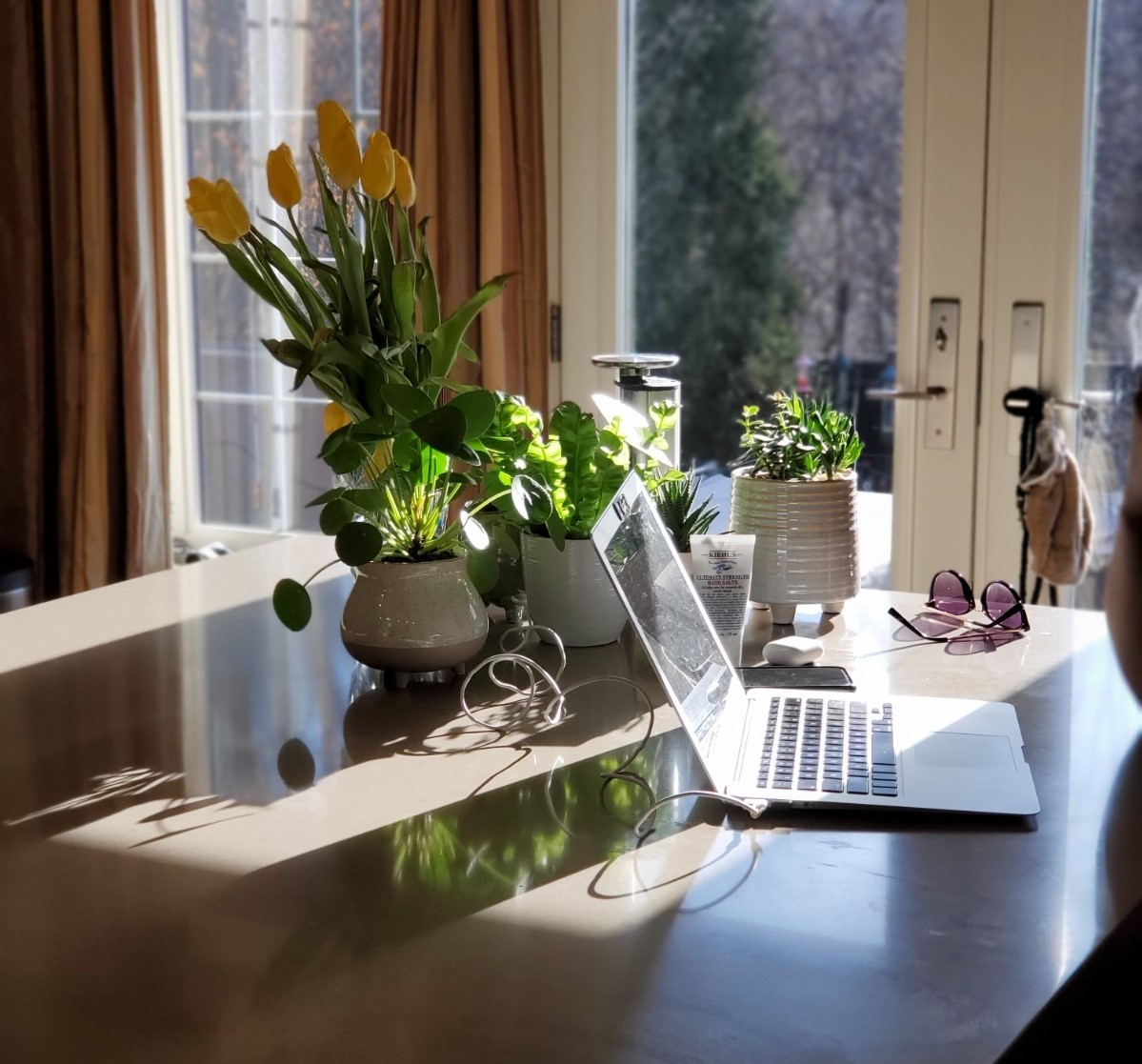Remote work has been thrust into the spotlight this past week as the world wages an all-out war to contain the Coronavirus outbreak. There are now thousands of companies and hundreds of thousands of workers trying to figure out how to be productive and effective while protecting their employees, customers, suppliers and families. The stakes are high – the world’s economy is being hurt badly by the impact of the pandemic, and companies are struggling to cope with this new reality.
In most organizations, remote work just simply isn’t an option. Industries like manufacturing, construction, healthcare, retail, services and many others require on-site work. Keeping these organizations productive and employees safe is a huge challenge right now, especially as the situation is evolving daily. On the other hand, for many tech companies, remote work is possible, and in fact, is critical to keep the business going while adhering to social distancing policies. But for those organizations and employees where remote work has not been the norm, being effective while working from home can take some work.
Dispatch has always been a remote-centric place of work. Since our founding four years ago, we were remote by default, with one founder located in Toronto and the other in Winnipeg. Since then, we’ve grown our team and now have 20 Dispatchers who are located across the country. We have offices in Vancouver, Winnipeg and Waterloo, but unlike most companies, these offices supplement the work we do from our home offices and are not the primary work location for most of our team. We have delivered major projects for customers across North America, Europe and Australia, and we pride ourselves on our work quality and efficiency. Yet in many cases, our teams have never been in the same room as our clients.
So, what have we learned about how to be productive remotely?
Work Environment Matters
Working from home blurs the lines between personal and business. As much as people who work remotely can brag about the commute, the downside is that things can get blurry between work and home. And as much as businesses worry about people slacking off when working from home, our experience is the opposite…it is too easy for people to work too much and never really disconnect from work when your “office” is your kitchen table. This can result in burn-out, and creativity and decision-making suffer when people over-work.
I am fortunate to have a dedicated space for my home office. While it isn’t realistic to “turn off” work completely when I leave that space, having this space is extremely valuable to put my mind into work-mode, and switch into family-mode when I leave.

During this COVID-19 crisis, my two daughters, Sarah and Marissa, who both work in tech companies, have returned home to work from our house while their companies implement work from home (WFH) policies. Both of them have set up dedicated places to work in our house and both spent some time making their work location pleasant, including setting up plants and lighting.

Getting the environment right is a good first step to being productive at home. Don’t work from your couch, or (apparently like some of my daughters’ friends) your bed. Dress as if you’re going to work. Be in a quiet space, keep the TV off, and try hard to mentally shift into work mode. At the same time, make an effort to get up and stretch, look out the window, go for a quick walk. Have a proper lunch. Call customers and colleagues don’t just email them. Unless I make a conscious effort, I find it is really easy to end up in front of my computer for hours on end without speaking to anyone. Go for a walk and make it a meeting by calling a teammate while walking. Moving helps to reframe what you’re working on and is an important part of managing stress when working remotely.

It’s also important to recognize that not everyone has the space to have a dedicated area to work. And for people with kids at home right now, it can be a big challenge to feel productive and be present for children that will be anxious and bored. Teammates and managers of people working remotely with kids around them – be patient and understanding. Letting parents take breaks to be parents will help productivity and focus.

Keep Teams Connected
 Working from home can initially feel great – no commute, no distractions, nobody heating up fish in the work microwave. But it can very quickly feel isolating. This is not good, particularly now when anxiety is high. The social benefits of working as part of a team can’t be underestimated. It takes more effort by everyone to remain connected and supportive of each other when remote. If you don’t invest in this effort, you won’t have a distributed team, you’ll just have a bunch of individual contributors that happen to work at the same company
Working from home can initially feel great – no commute, no distractions, nobody heating up fish in the work microwave. But it can very quickly feel isolating. This is not good, particularly now when anxiety is high. The social benefits of working as part of a team can’t be underestimated. It takes more effort by everyone to remain connected and supportive of each other when remote. If you don’t invest in this effort, you won’t have a distributed team, you’ll just have a bunch of individual contributors that happen to work at the same company
Tools like Slack and Zoom are great. At Dispatch, we live in Slack, and most of us spend hours each day in Zoom conference calls. But there are a few things we’ve learned by using these platforms.
- Slack messages are super-efficient but don’t replace talking to each other. Whenever possible, have a quick conference call…even if it’s for a minute. It is really easy to start a call from a message thread in Slack with just a couple of keystrokes.
- Be mindful that too much Slack can be a bad thing…the constant pinging of alerts can be a major distraction to people trying to reach a state of flow. Of course, this is true when you’re at an office too, but I find the urge for connection makes reading every Slack message when it comes in almost irresistible. Give people permission to mute Slack when they are in “heads down” mode and don’t expect all slack messages should be answered immediately.
- It’s hard to “chitchat” on a video conference, but that is an essential part of building trust in a team. Whenever possible, build some time into meetings so people can just talk with each other.
- Turn on the camera when having a video call. Not everyone is comfortable with this, because feeling “on-camera” can feel weird at first. But letting everyone see each other is a fundamental part of social connection.
- We do a daily stand-up on Slack, where we share what our priorities are for the day, what our deliverables are, and what we might need help with. This is really important for a distributed team…otherwise it is really easy to lose track of what everyone is doing and where we can help.
- Team creative time takes the most effort when working remotely. The tools to whiteboard remotely aren’t as easy to use as, well…a whiteboard. There is a tendency to treat a video conference as a passive event to watch someone else’s PowerPoint. But it is possible to have creative sessions. Keep collaboration meetings small and set expectations that you’ll be working together. Point your webcam at a real whiteboard. Collaboration tools like Zoom let you take control of remote screens to share your thoughts. Use tools like LucidChart and Google Docs to work on the same content simultaneously.
- Small things help build human connection. Earlier this year, we asked our team to put together a list of their favorite songs. We made a playlist webpage to share these with each other and with our clients too.
- We created a Slack channel just to share personal moments, called DTV. Short videos, pictures and personal anecdotes help us stay connected.
If you’re a manager, especially if your company is being thrust into this WFH model, reach out to each of your reports – just to check in and build trust. There’s a chance some members of your team will be feeling anxious, uncomfortable, disconnected and unproductive. It’s possible they are struggling with keeping kids occupied, trying to work in less than ideal conditions, and potentially working in the same space with spouses or roommates who are also on WFH. It’s important to have a level of trust that your team can share this with you, and you can work together to find solutions to these challenges.
Many Tech industry workers are fortunate to have the ability to work from home. Particularly now that most companies have a cloud-centric work environment, the tools are available to remain productive and effective. But to remain a true team when remote requires recognition by management that human connection is still fundamental to a strong culture and a commitment by everyone to support each other during this challenging time.
Contact us to learn about our products and services.
About Dispatch Integration:
Dispatch Integration is a software development and professional services firm that develops, delivers, and manages advanced data integration and workflow automation solutions. We exist to help organizations effectively deal with the complex and ever-changing need to integrate data and optimize end to end workflows, between cloud-based, mission-critical applications.
Read more from Dispatch Integration:
How iPaaS Technology Solves Data Integration Challenges
Data Integration of Cloud-Based Systems – The Often Forgotten Piece
Add Traceability to Your Workday Studio Assemblies
Cameron Hay is the CEO of Dispatch Integration, a data integration and workflow automation company with clients in Canada, US, Europe and Australia. He has over 30 years of leadership experience in various technology-oriented industries.

